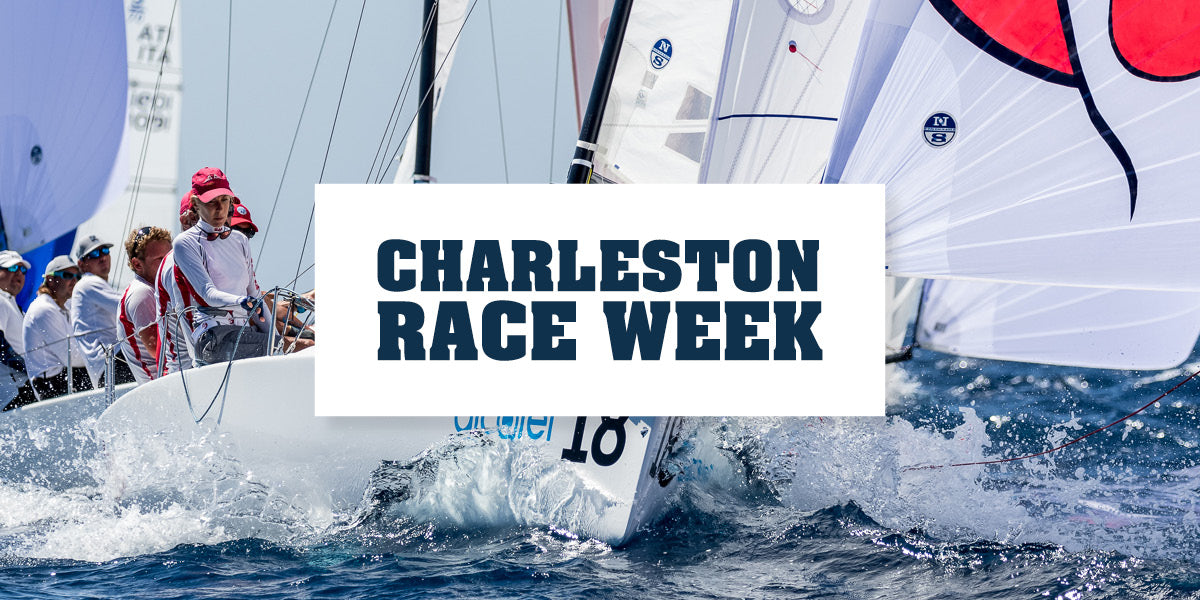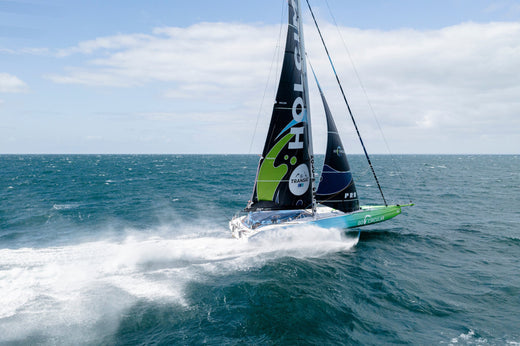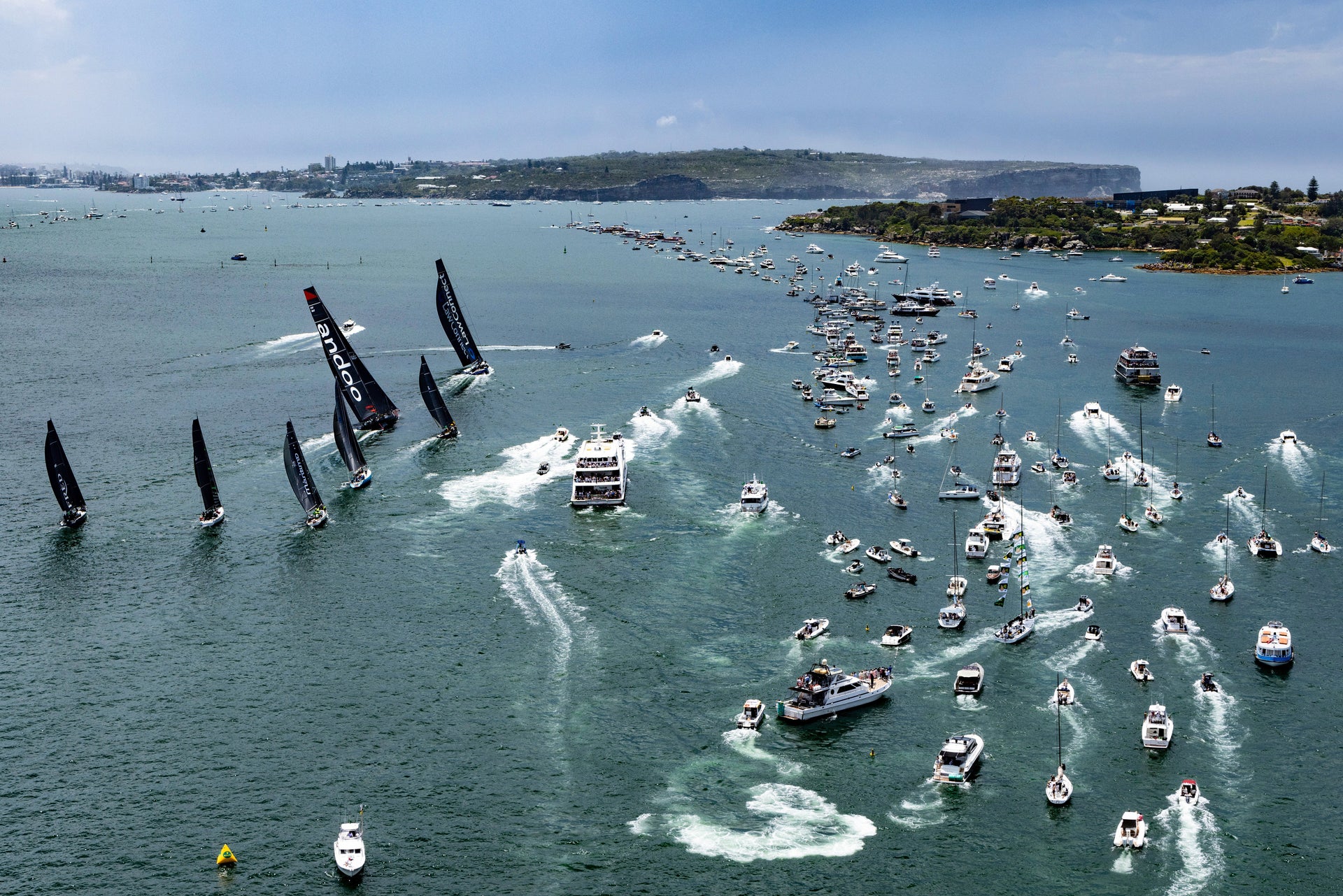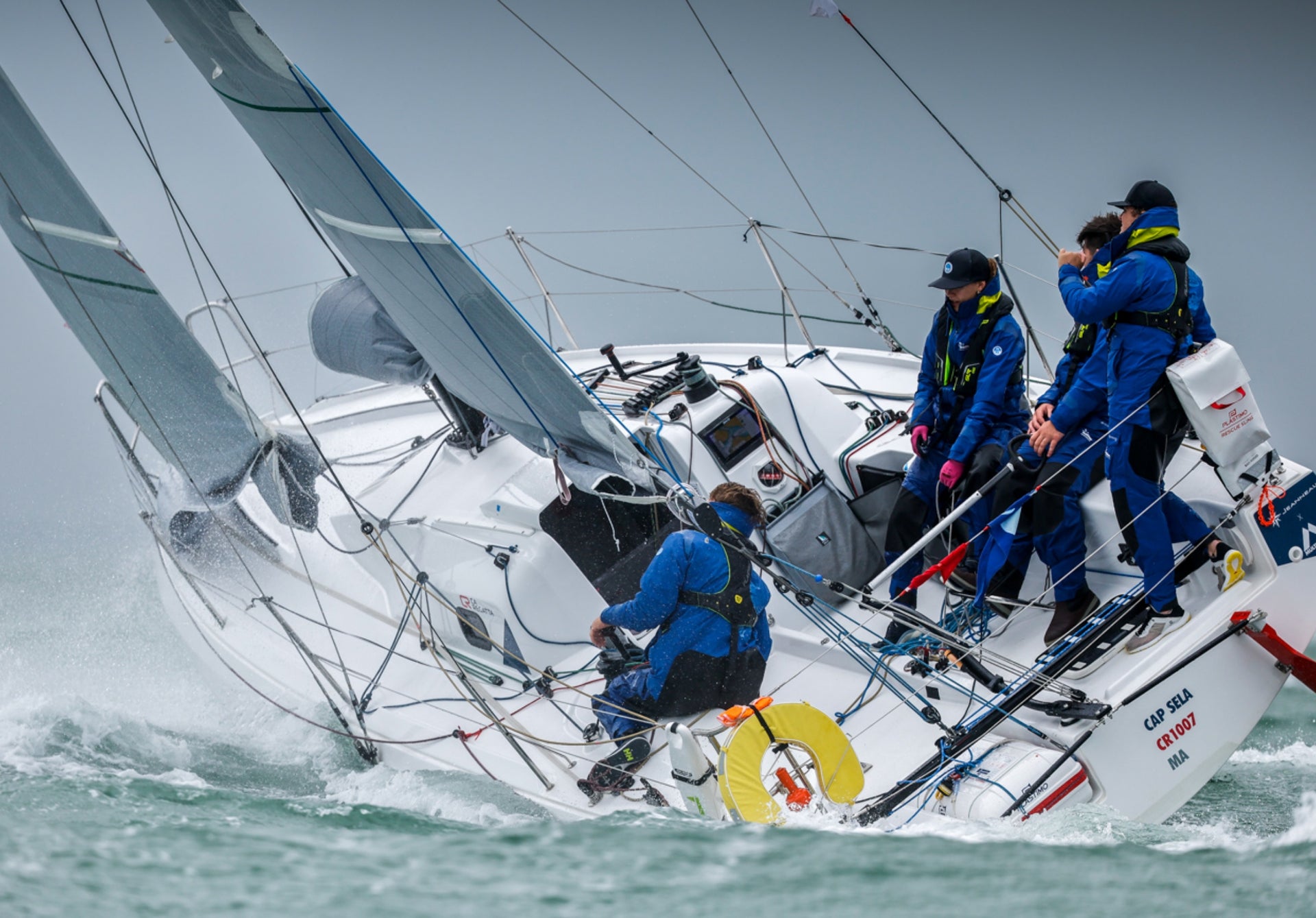TIPS FROM OUR LOCAL EXPERTS
North Sails Charleston Team Give Us The Inside Scoop On Racing In Charleston

With the first race right around the corner, we grilled John Bowden, Rich Bowen and Ervin Grove, North Sails' local experts, on what counts and what doesn't when sailing Charleston Race Week. Here's a recap on what they told us.
What season is April in Charleston?
Winter may be over, but early spring can still bring some big fronts through town, which means chilly northerly winds. But more often, the days will be warm and draw in the southeasterly seabreeze. The bottom line? Get ready to dress for either condition. Water temperatures are in the high 60's, so if you're from the northeast, a wave in the face will feel like mid-summer.
What's the regatta set up?
Charleston Harbor is located at the confluence of three rivers - the Wando, Cooper, and Ashley - with a big island in the middle named Shutes Folly Island. Boats are parked at Patriots Point Marina (the regatta HQ, near circle 4), Carolina Yacht Club (near circle 1), and James Island Yacht Club (south of circles 1-3). Four racing areas are inside the harbor while circle 5 south and north are outside. Depending on your location and your assigned race area, it'll take 20 minutes, plus or minus, to get to the inside courses. The fleets racing outside start their first race in the harbor and sail a pursuit race out to their circle, then do the opposite at the end of the day. That minimizes the commute and congestion, and maximizes racing time.

How long are the courses?
The organizers aim to have one-mile beats on most courses and approximately 45 minutes per race. In a seabreeze, they can sometimes stretch the legs slightly. In winds from other directions, it's a challenge to keep the courses on different circles from overlapping, so they may shorten up.
What are the common wind directions?
The Charleston seabreeze typically comes in about 11am or noon from the southeast. It may start more easterly and swing to the right with a fair amount of south in it, building to 12 to 15 knots. If it's warm and the skies are cloudless in the morning, the seabreeze usually arrives sooner. If it's going to be a weak seabreeze, it may not come in until the tide changes. If a weather system comes through, the wind will often blow fairly hard for a day or two from the north-northeast with big wind shifts. The locals watch to see "which river will pay", as the wind often channels out of one river and then the other.
What about the tidal current?
Charleston has a strong tidal flow, and Bowden says the organizers schedule the event to minimize motoring with an ebb tide in the morning and a flood in the afternoon. The harbor is subject to a tidal range of 5.5 to 7 feet, so you would think it would make sense to know exactly what time the tide is going to change. However, because there are three rivers involved, the direction of the current flow varies across the harbor, and if it's been raining in the hills of North Carolina earlier in the week, the tide change could easily be off by an hour. It can also be very different from course to course and across a single racing area, particularly on circle 2 and 3.
How do you deal with unpredictable currents?
The consensus is to get to the racecourse nice and early and do your homework. Pay attention to how the signal boat is lying at anchor, sail the weather leg, and look out for crab pots. Also note your location relative to the closest river. For the rest of the day, keep watching what the current is doing as it changes. And don't be surprised to find variation in current direction on different parts of the same race circle.
What's the difference when racing offshore?
When racing the pursuit legs, in and out of the harbor, be aware of commercial traffic. You'll see containerships coming through and they're going fast. Stay clear! If you get a series of warning blasts from the ship, you will be disqualified. Watch your AIS, keep someone on the VHF, and don't hesitate to call the harbor pilots on channel 13 or 16. Have a conversation with them and let them know what you're trying to do. When they come past you , you can sail outside of the channel, fairly close to the jetties.
Top tip for visitors?
Watch what it does on the starting line and don't hit a mark and let it ruin your regatta, but don't get hung up on the current and bang the corners looking for a current advantage. The current may favor one side or the other, but when racing inshore, the wind shifts are usually more important. When you see someone winning a race by a lot during the regatta, it's usually an out-of-town boat with a sharp-eyed tactician taking advantage of a great windshift.
Off the water, any food recommendations for out-of-towners?
Charleston is great, bot for lunch and dinner, but it't busy. For sandwiches, go to
Jersey Mikes,
Publix, or
Brown Dog Deli. Order ahead if you can. For dinner, make reservations early, or you'll have a very long wait.
What do we do if we need sail repair during the regatta?
Our
North Sails loft in Charleston is ready for all your regatta repairs. Call Certified Service Manager,
Ervin Grove directly at
865-789-2895 or the loft at
843-722-0823 for sail pick up and delivery information.
 With the first race right around the corner, we grilled John Bowden, Rich Bowen and Ervin Grove, North Sails' local experts, on what counts and what doesn't when sailing Charleston Race Week. Here's a recap on what they told us.
With the first race right around the corner, we grilled John Bowden, Rich Bowen and Ervin Grove, North Sails' local experts, on what counts and what doesn't when sailing Charleston Race Week. Here's a recap on what they told us.


























